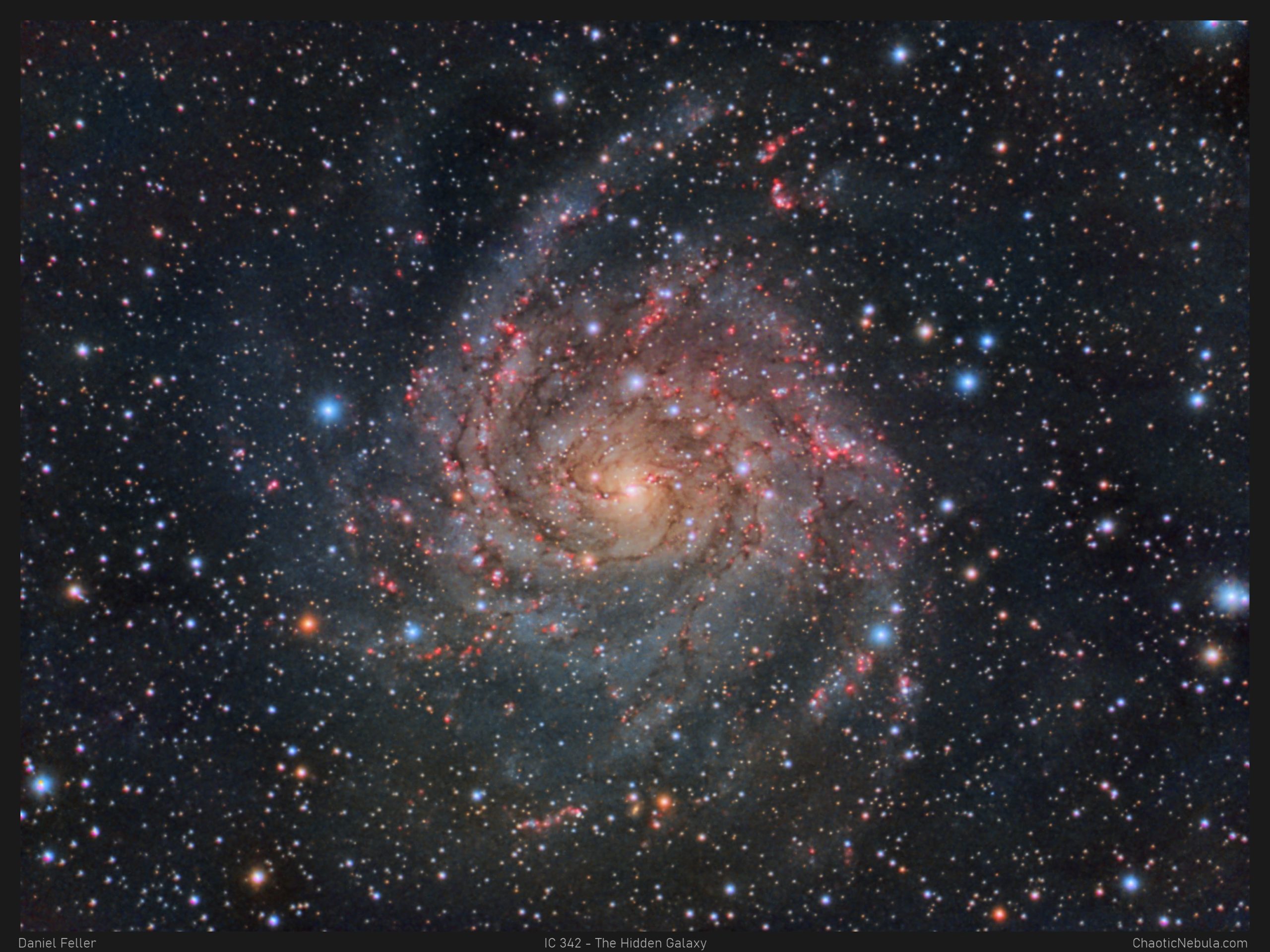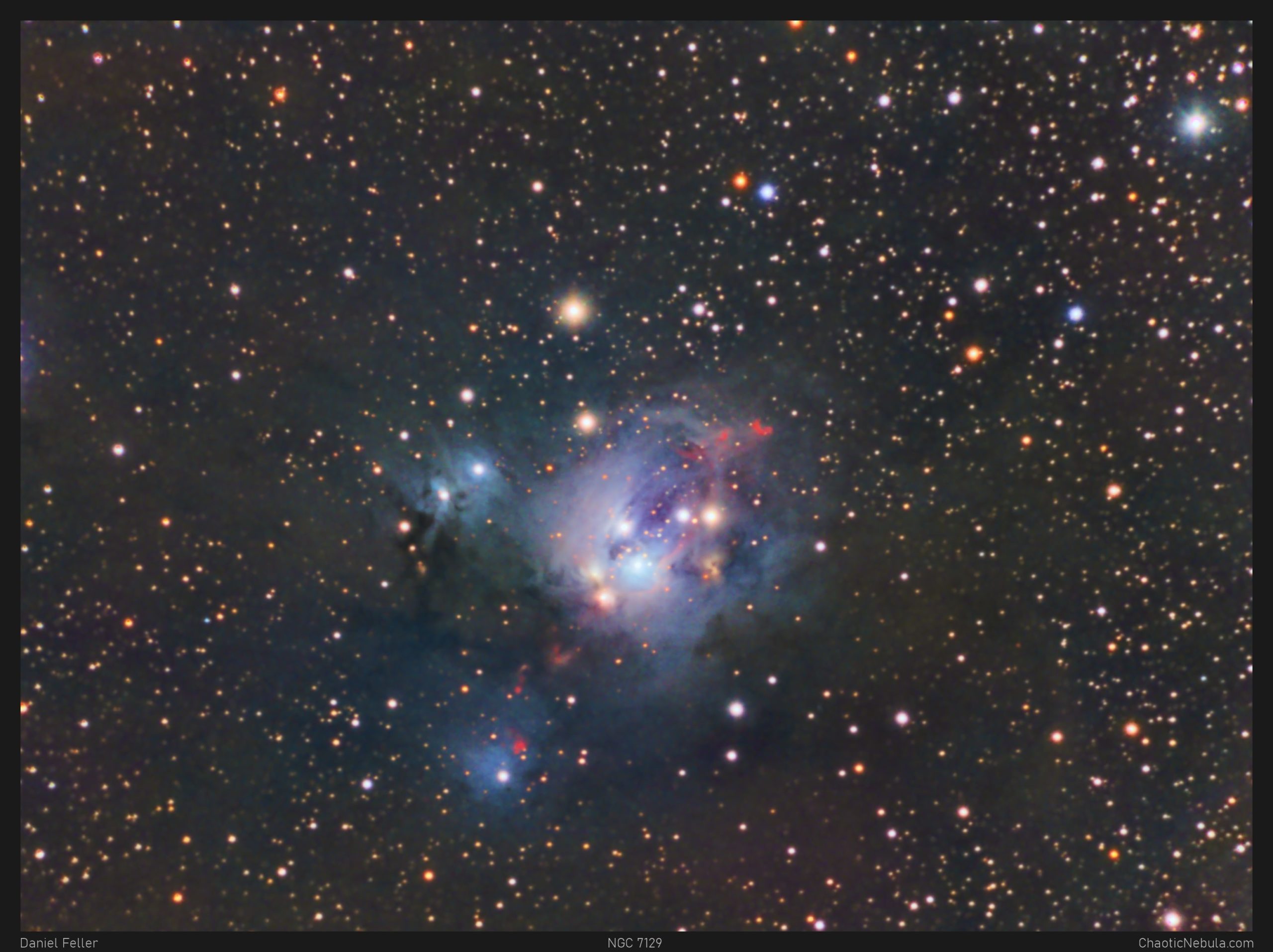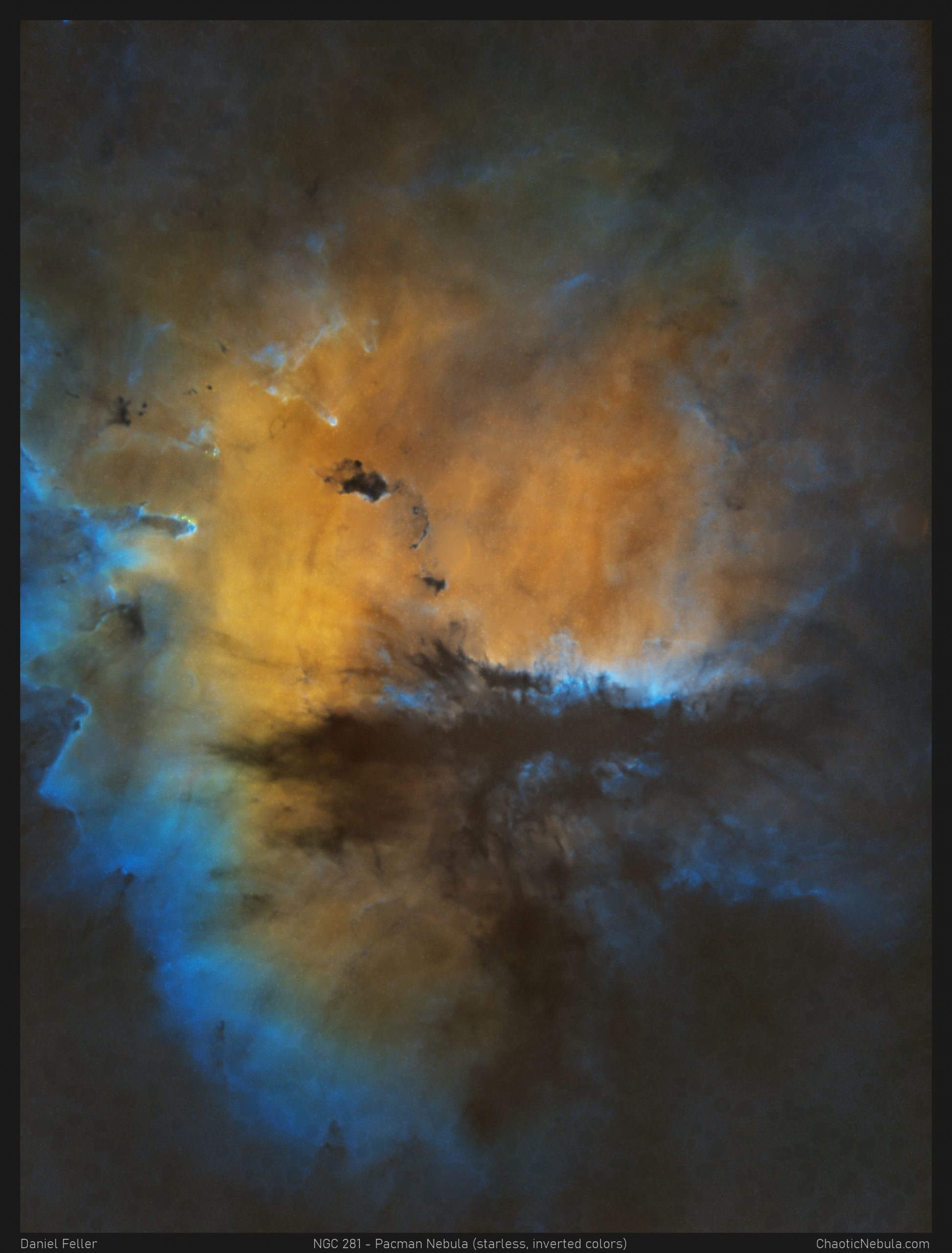Deer Lick Group and Stephan’s Quintet Group of Galaxies
A very busy section of the night sky. This image includes two different groups of galaxies: Deer Lick Group (upper-right) and Stephan’s Quintet (lower-left).
First, the big galaxy, NGC 7331, isn’t really part of the group of galaxies behind it. It just appears that way due to its location in the sky. For example, NGC 7331 is around 30 million light years away. But the other galaxies around it (NGC 7333, 7335, 7336, 7337, 7338, 7340) are around 300 million light years away. They are in the background and are not physically grouped with the big galaxy NGC 7331.
(more…)


